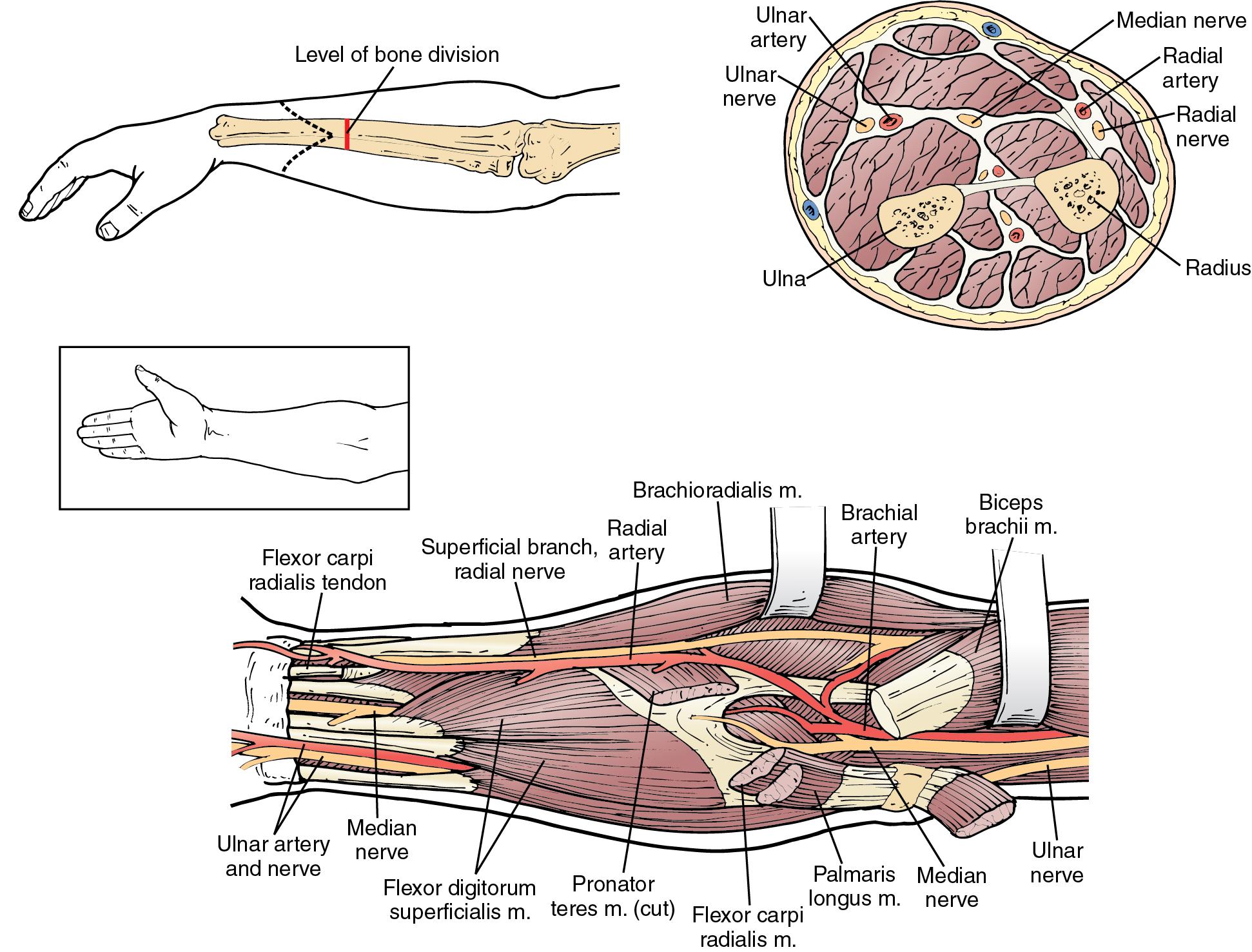Physical Address
304 North Cardinal St.
Dorchester Center, MA 02124
The goal of upper extremity amputation is to provide a stable, functional limb with durable soft-tissue coverage to facilitate the use of a prosthesis.
Upper extremity amputation is most common after unsalvageable trauma, such as a crushed/mangled extremity, amputation with prolonged ischemic time, electrical burns, complex vascular injury, or cold injury/frostbite.
Amputation is also used to remove unresectable sarcoma, such as tumors with extensive vascular involvement, osseous/articular destruction, or soft-tissue loss.
Infection, especially necrotizing fasciitis, in which soft-tissue reconstruction could not be accomplished after extensive debridement is another indication.
Rarely, an elective amputation may be chosen by a patient who has chronic posttraumatic pain and/or spasticity.
Regenerative peripheral nerve interface (RPNI) is indicated at the time of primary amputation for the management of peripheral nerves, with the goal of reducing the incidence of painful neuroma formation. All transected nerves will form neuromas because the axons are seeking a target to innervate, whether through a nerve or into a muscle. To avoid potential painful neuromas, we recommend performing RPNI after all primary upper extremity amputations.
Targeted muscle reinnervation (TMR) provides a similar function with identical indications, but instead of free muscle grafts to individual peripheral nerves as with RPNI, TMR uses nerve coaptations/transfers of nonfunctioning distal peripheral nerves (radial, ulnar, median) to functioning peripheral nerve branches of proximal muscle bodies (biceps, triceps, pectoralis, latissimus). We prefer RPNI to TMR because it is less complicated and does not sacrifice the function of proximal muscle bellies.
RPNI can also be used in a revision setting for the management of neuromas in a chronically painful amputated limb.
RPNI and TMR are currently being used experimentally for advanced control of myoelectric prosthetics.
Amputation should be avoided in patients who already have an amputation or disability of their contralateral upper extremity.
Preoperative evaluation with a physiatrist or amputation psychologist is strongly recommended in cases of elective amputation. If any concerns are raised about a patient’s ability to cope or adapt after an amputation, it should be avoided.
RPNI should be avoided when infection or other gross contamination of the wound bed is present. In this scenario, delaying the RPNI procedure is recommended.
In cases of acute injury, it is important to first decide if replantation or limb-salvage is achievable. If not, one should assess the extremity and decide what is viable versus nonviable tissue. If there is extensive soft-tissue loss, then skin grafting or a flap may be necessary to cover the stump site.
In cases of malignancy, it is important to study the patient’s surface anatomy and advanced imaging because this will dictate the necessary level of amputation.
Standard anteroposterior (AP) and lateral radiographs should be obtained to identify any fractures or foreign bodies.
In cases of infection or malignancy, magnetic resonance imaging (MRI) with and without contrast can be invaluable in determining the proximal extent of pathology to avoid incorporating contaminated tissue into the amputation site.
There are five main nerves and four arteries that must be identified, divided, and ligated during a standard transradial amputation ( Fig. 4.1 ):
The superficial radial nerve (SRN) is found within the radial, most subcutaneous tissue of the mid forearm. The smaller lateral and medial antebrachial cutaneous nerves can also be found in this area.
The radial artery is identified proximally under the brachioradialis. At the middle-to-distal forearm, the radial artery runs between the flexor carpi radialis and brachioradialis tendons, with no superficial muscular covering.
The median nerve is found within the volar compartment. At the level of the mid forearm, the median nerve courses between the muscle bellies of the flexor digitorum superficialis and profundus, ulnar to the flexor carpi radialis.
The ulnar artery and nerve together comprise the ulnar neurovascular bundle. This structure courses deep into the flexor carpi ulnaris (FCU) muscle belly within the forearm, with the nerve traveling ulnar to the artery.
The anterior and posterior interosseous arteries run longitudinally along the anterior and posterior aspects of the interosseous membrane. Depending on the level of amputation, a proximal or distal anastomosis may be encountered. The terminal branches of the anterior and posterior interosseous nerves are found just adjacent to their corresponding artery.

Become a Clinical Tree membership for Full access and enjoy Unlimited articles
If you are a member. Log in here